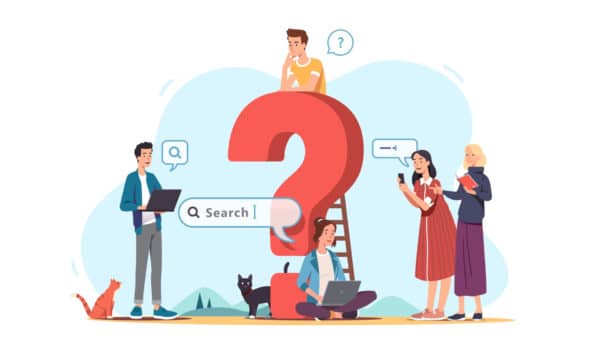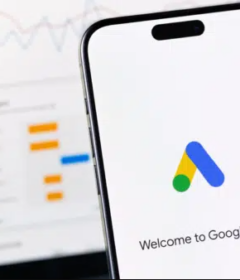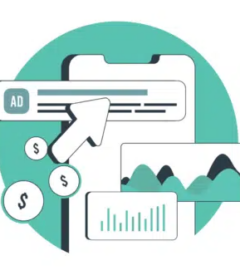Google’s helpful content update: What should we expect?

SEOs may be in for another shakeup similar to Penguin’s launch 10 years ago. Here’s what you need to know about Google’s new update.
The new helpful content update sounds like a big deal.
Google has given us a list of questions to consider to determine whether our sites are designed to help people, or rather, created to do well on search engines.
If the latter is the case, you may find yourself hit with a sitewide signal that makes it difficult to rank.
If this update has a strong impact, which I believe it will, we may be in for another shakeup in the world of SEO like we had following the launch of Penguin 10 years ago.
If you have focused more on SEO efforts than creating content for humans to benefit from, this could strongly affect your site. It still remains to be seen how powerful this ranking signal is.
Does it affect all sites that use SEO?
Google was careful to note in their blog post that this update does not invalidate following SEO best practices.
They say, “SEO is a helpful activity when it’s applied to people-first content” and link to their SEO starter guide. Google is not against search engine optimization.
This update is geared toward sites that have gamed the system, creating content that isn’t super helpful to people but still ranking well because of SEO rather than on the merit of the content on the site.
Is it a penalty?
Google is careful in its wording regarding whether this is a penalty.
It’s not a manual action. You won’t see it listed in Google Search Console. It’s not a spam action.
We are to call it a “signal”. This is one of the many ranking signals Google describes in their documentation on How Search Works.
If that signal is applied to your site, it likely will feel like a penalty.
The good news is that you can get this classification removed from your site if you can improve your content.
The part of Google’s algorithm that classifies sites for this update will be running continuously.
If the algorithms see that your site’s content has shifted to be helpful to searchers, the strength of the signal may be reduced, or even lifted completely.
This announcement reminds me of the early days of Google’s Penguin and Panda algorithms.
Today these algorithms are baked into the core algorithm, but initially, they were filters that were applied to affected sites.
Sites with unnatural links (Penguin) or low-quality content (Panda) would have a filter applied that suppressed ranking.
If those sites cleaned up their link profile or improved the quality of their content then they had a chance at seeing recovery the next time Google ran a Penguin or Panda update.
 100vw, 800px” data-lazy-src=”https://searchengineland.com/wp-content/seloads/2022/08/penguin-impact-2012-800×109.jpeg” /></figure>
</div>
<p>It sounds like the helpful content classifier will have a similar effect in that sites affected will suffer some degree of sitewide ranking suppression and eventually can have that suppression lifted. But there are some significant differences:</p>
<ul>
<li><strong>The helpful content classifier runs in real-time, continually</strong>. This means that new sites created just for SEO should have the signal applied right from the start. Also, existing sites can be affected when the amount of content created for SEO purposes exceeds a threshold.</li>
<li><strong>Sites will be impacted over the course of a few months and to different degrees</strong> depending on the amount of unhelpful content found. Google won’t run specific updates during which sites recover. Rather, if the classifier determines that content has changed to now be deemed helpful to searchers and has remained that way for a few months, the weight of the deranking signal will be reduced or even lifted.</li>
</ul>
<h2 id=) What is people-first content?
What is people-first content?
This is what Google wants us to focus on. But what is it?
I’ll share my thoughts on each of the questions they say to ask ourselves about our content.
“Do you have an existing or intended audience for your business or site that would find the content useful if they came directly to you?”
Something I’ve often said to clients when trying to explain content quality is, “Would this content still exist if it wasn’t for search engines?”
A local business would still want to educate its customers on their services.
The National Kidney Foundation would still publish content to educate patients and doctors.
Would you still create the content you are creating if search hits from Google did not exist?
“Does your content clearly demonstrate first-hand expertise and a depth of knowledge (for example, expertise that comes from having actually used a product or service, or visiting a place)?”
This should not be new to us!
Google’s blog post on what site owners should know about core updates has a whole section of questions to ask ourselves in regards to expertise.
Knowing your topic is important.
I feel Google has started to promote first-hand expertise with recent product review updates.
Many that were affected by the July 2022 product review update were sites that lacked legitimate first-hand expertise in using the products they were recommending.
For the majority (if not all) of the sites I reviewed that were affected by this update, there was a sitewide demotion.
“Does your site have a primary purpose or focus?”
The search quality evaluator guidelines teach Google’s quality raters that it is important to determine a page’s purpose.
Is it designed to share information? Or to sell products? Or perhaps to entertain?
Why does your site exist? How are you trying to help people?
It is important that the purpose of your content’s existence is clear.
 100vw, 751px” data-lazy-src=”https://searchengineland.com/wp-content/seloads/2022/08/what-is-the-purpose-of-a-webpage.png” /><figcaption><em>From section 2.2 of the search quality evaluator guidelines: What is the purpose of a webpage?</em></figcaption></figure>
</div>
<p>I think that many people who have created sites that are created with SEO efforts foremost in mind will rationalize that their content <strong>is</strong> created to inform people.</p>
<p>If you’re unsure, I encourage you to review the next two questions:</p>
<ul>
<li>After reading your content, will someone leave feeling they’ve learned enough about a topic to help achieve their goal?</li>
<li>Will someone reading your content leave feeling like they’ve had a satisfying experience?</li>
</ul>
<p>Google wants to present searchers with information that fully meets their needs.</p>
<h2 id=) How do I know if my content is built for search engines first?
How do I know if my content is built for search engines first?
Once again, Google has given us some questions to ask.
When I read these, it feels to me that this update could have a large impact on what we see in the search results.
If these questions apply to your content, you may find that your site is classified sitewide as being created primarily for search engines.
“Is the content primarily to attract people from search engines, rather than made for humans?”
I expect some content may lie on a spectrum. Google says the signal is weighted and that “[s]ites with lots of unhelpful content may notice a stronger effect.”
Super spammy sites with little actual benefit to searchers should be hit strongly.
Sites with some content created primarily with SEO in mind that also have content that is helpful will be impacted, but not as strongly.
It is important to remember that the sitewide effect means the good content on your site will also be affected by this update if Google deems you worthy of the classification.
“Are you producing lots of content on different topics in hopes that some of it might perform well in search results?”
Many of the sites affected by the July 2022 product reviews update were review sites that reviewed almost any product out there. There was little focus other than “we review products.”
I expect we’ll see declines in many sites because they are writing on as many topics as they can rather than focusing on what is important to their users.
“Are you using extensive automation to produce content on many topics?”
I wonder whether this line is geared toward sites writing their content mostly with AI content-generating tools.
AI-generated content can often rank well because it contains many of the words search engines use to determine relevancy.
But a person can usually tell when content is AI-written and not created by an actual human. If you are creating content by automated means, you may find yourself on Google’s radar.
“Are you mainly summarizing what others have to say without adding much value?”
This makes me think about review sites that aggregate Amazon listings and slightly re-word them. It will be interesting to see if other types of aggregator sites are hit as well.
“Are you writing about things simply because they seem trending and not because you’d write about them otherwise for your existing audience?”
I do think that it is still acceptable to write on trending topics provided they are what your audience wants to read.
But if the focus of your site is simply to capitalize on new trends, I expect you may be affected.
“Does your content leave readers feeling like they need to search again to get better information from other sources?”
The quality rater guidelines instruct the raters to determine to what extent content meets a searcher’s needs:
 100vw, 800px” data-lazy-src=”https://searchengineland.com/wp-content/seloads/2022/08/quality-rater-guidelines-800×276.png” /></figure>
</div>
<p>It is becoming increasingly more important to determine what your readers’ intent is when they come to your site.</p>
<p>And are you fully satisfying their needs? Would they need to go elsewhere for more information after reading your content?</p>
<blockquote class=)
“Are you writing to a particular word count because you’ve heard or read that Google has a preferred word count? (No, we don’t).”
I have seen blog posts that advise that content below a certain word count will be considered thin by Google which is not the case. Sometimes short content actually helps the searcher more.
I suppose this question is written to dissuade sites from writing massive articles covering everything there is to know about a topic on one single page (unless it is meeting the need of searchers who want to read a thorough essay on a subject).
This may seem like it contradicts Google’s advice to fully meet the needs of a searcher.
If tasked with creating content on buying a lawn mower, many SEOs are conditioned to produce the most thorough article on lawn mowers possible.
Let’s say a searcher typed, “best lawn mower.”
Do they really need an article that explains “What is a lawn mower?,” “Types of lawn mowers” and also “How to start a lawn mower”?
Having those words on the page historically has helped search engines understand that the page is relevant to lawn mowers.
However, the searcher’s intent, in this case, is to get help in deciding which mower to buy, not to learn everything there is to know on the subject.
A shorter article may be what is more helpful to a searcher in this situation.
“Did you decide to enter some niche topic area without any real expertise, but instead mainly because you thought you’d get search traffic?”
I’ve seen a real rise lately in discussions about operating “niche sites.”
I do think some of these will survive, provided the writer really is passionate about the niche and can write on relevant topics from a point of personal experience.
But if you’ve picked a niche primarily based on your ability to rank for that content, rather than out of a passion for covering that topic, you may find Google does not reward you.
“Does your content promise to answer a question that actually has no answer, such as suggesting there’s a release date for a product, movie, or TV show when one isn’t confirmed?”
This seems like a specific question and is pretty straightforward.
Is recovery possible?
If your site is classified as being built primarily for search engines, you will likely see a significant decline in search traffic over the next few months.
Google says that sites that are affected will indeed be able to work to get the classifier removed and possibly recover their rankings.
It is important to remember that if Google sees enough SEO content on your site, the sitewide signal will also impact the remainder of the content on your site as well.
As such, you will need to identify where the problems are and work aggressively to repair them if you want to rank at all.
Here is what I will be recommending to sites that come to us for help after being affected by this update although we’ll adapt our advice as more information becomes available:
- Identify which content on the site could be construed as being created for search engines rather than humans.
- Determine whether that content can be improved upon to Google’s satisfaction, or whether it should be noindexed/removed from the site.
- Find ways to produce content that goes above and beyond when it comes to being helpful to searchers. This may include adding more user-generated content, first-hand photos or videos, etc.
- Compare competitor pages that continue to rank well to see if we can understand what content Google is rewarding as inspiration on how to improve our content.
- Work on improving E-A-T for the site to help make it more obvious to Google’s algorithms that the site has and also is known for having expertise on the topics it covers.
- Clarify what the purpose or focus of each page is (and ensure that this purpose is first and foremost meant to help people).
- In some cases, know when to cut losses and move on. I believe that some sites that are hit by this update may not be able to recover without extensive and possibly unattainable changes.
Conclusions
Prior to the launch of this update, Google reached out to several SEOs, myself included, to discuss its release. They wanted to make it clear that this is not an attack on SEO.
Good SEO can help people-first content perform even better.
It sounds to me like there is the potential for this update to have a strong impact on many sites that have invested heavily in SEO.
I am looking forward to participating in and watching the discussions on changes that the SEO community is seeing once this update is live. I hope you fare well!



